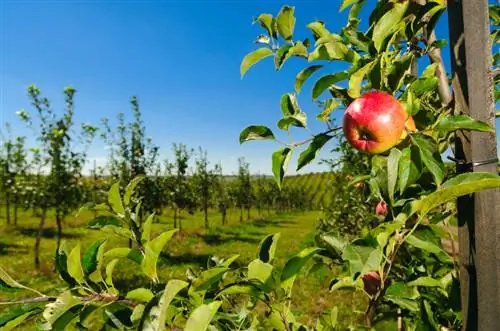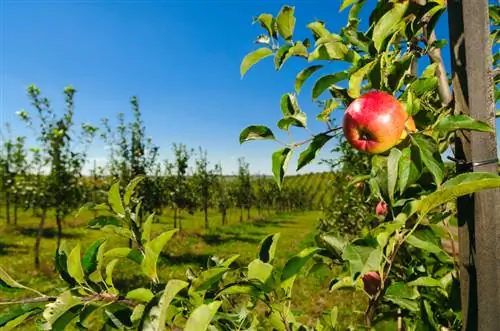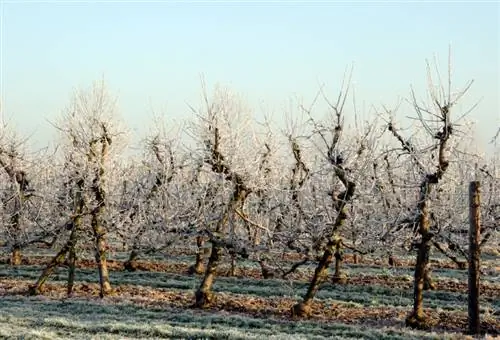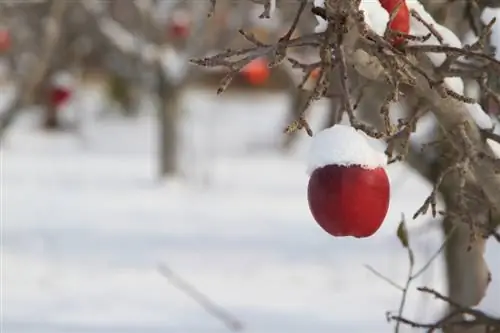- Author admin [email protected].
- Public 2023-12-16 16:46.
- Last modified 2025-01-23 11:19.
Most varieties of apple trees do not place particularly high demands on their location or the respective factors such as light and weather. However, valuable insights for selection and care can be derived from the typical properties of the apple tree.

What properties are important for apple trees?
Apple trees are relatively undemanding, but prefer well-ventilated, sunny locations and well-drained soil. Regular care, such as pruning, is important for vitality and harvest. Waterlogging and fungal infestation can be avoided by choosing resistant varieties and suitable locations.
Choosing the right variety for a location
When choosing a new apple tree to plant, you have many options to choose from. The most important features are:
- The grafting form and thus the trunk height
- The apple variety
- Resistance properties against diseases
- Resistance to fungal attack
In a garden surrounded by high hedges, it is advisable to plant a tree with a standard trunk so that the tree crown can be well ventilated by the wind and thus protected against fungal infestation.
No type of fruit for a large harvest without care
Although an apple tree is basically a rather uncomplicated fruit tree, it still requires annual interventions and care for vitality and a rich harvest. This includes, for example, regular pruning in the winter rest months from January to February. Attention should not only be paid to the formation of a light and air-permeable tree crown, but also to a stable alignment of the respective branches. During summer pruning, errors can be corrected and shoots that shoot up vertically can be trimmed so that the energy of the apple tree can be channeled into the ripening fruits.
Apple trees don't like waterlogging
Apple trees can tolerate dry periods of one or two weeks in summer. On the other hand, despite their rather shallow roots, they do not like it when the soil is constantly moist. In depressions, you should therefore first dig deeper and add a drainage layer when the apple tree is planted. A tree crown that is too dense and a location protected from the wind can lead to powdery mildew infestation, especially if varieties are not sufficiently resistant.
Tips & Tricks
Old apple varieties in a region are often optimally adapted to the respective microclimate. You can usually inquire about such particularly suitable varieties from fruit growers and the local horticultural association.






